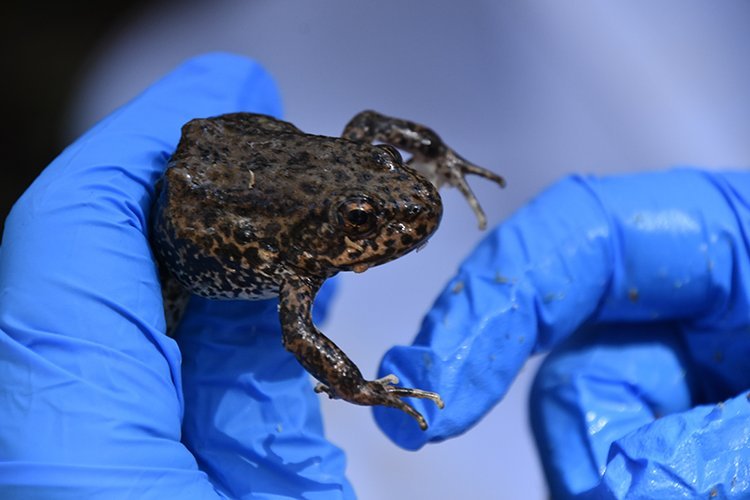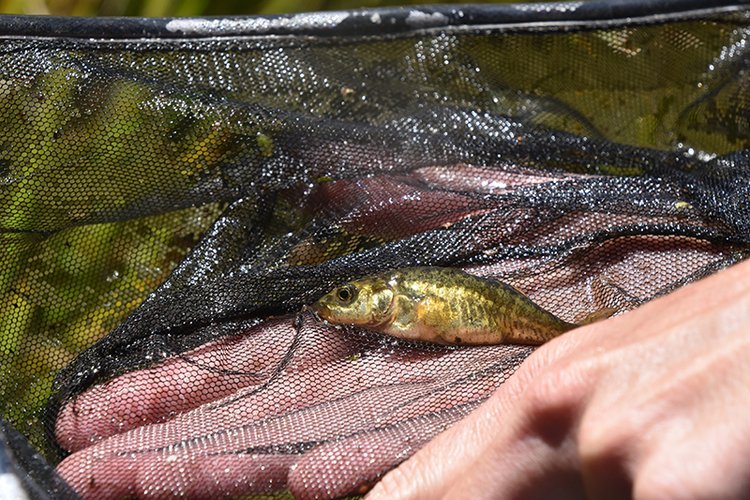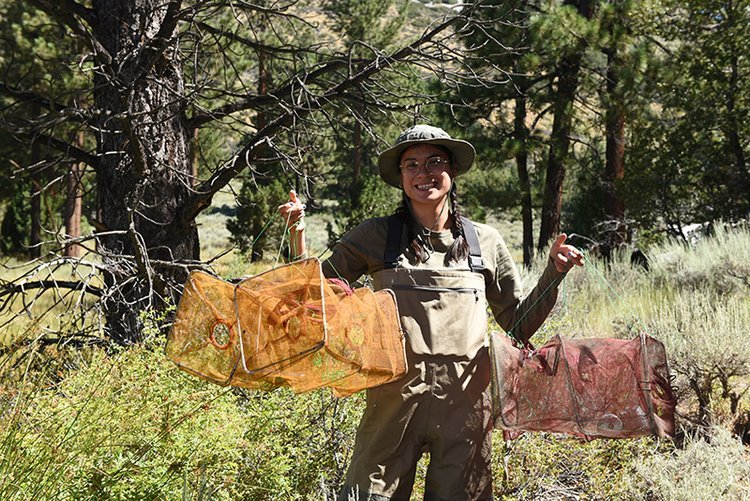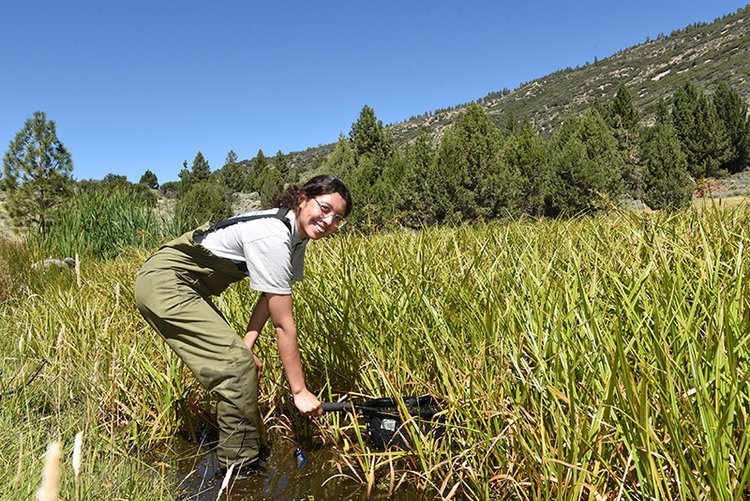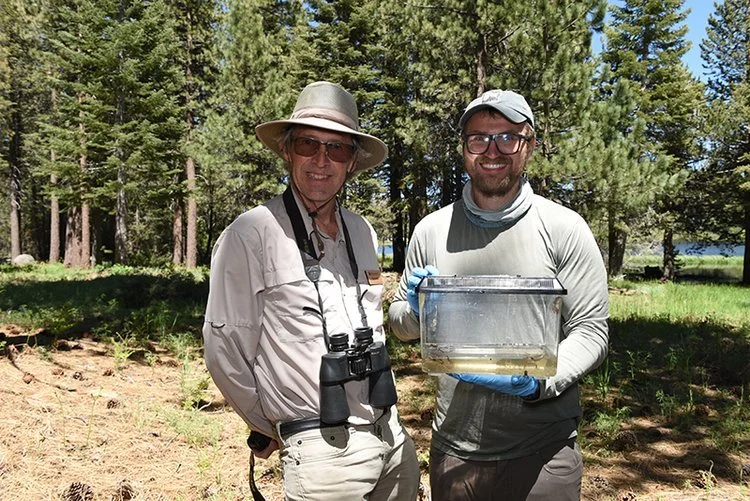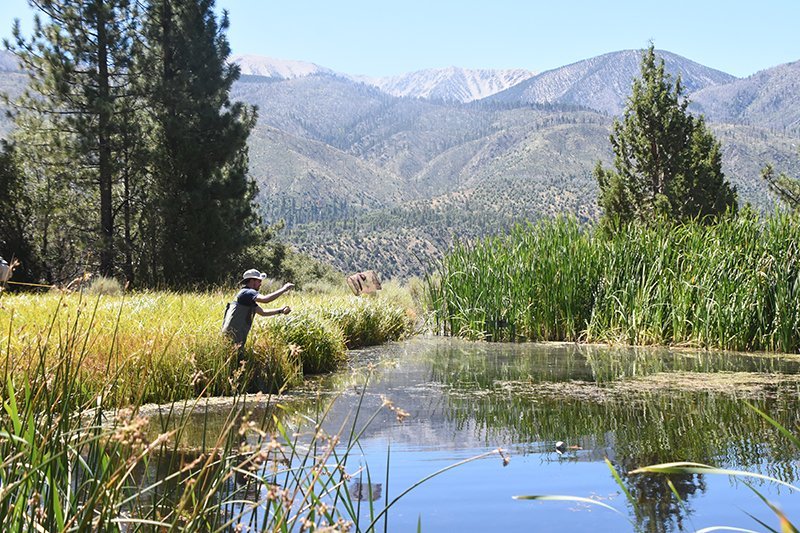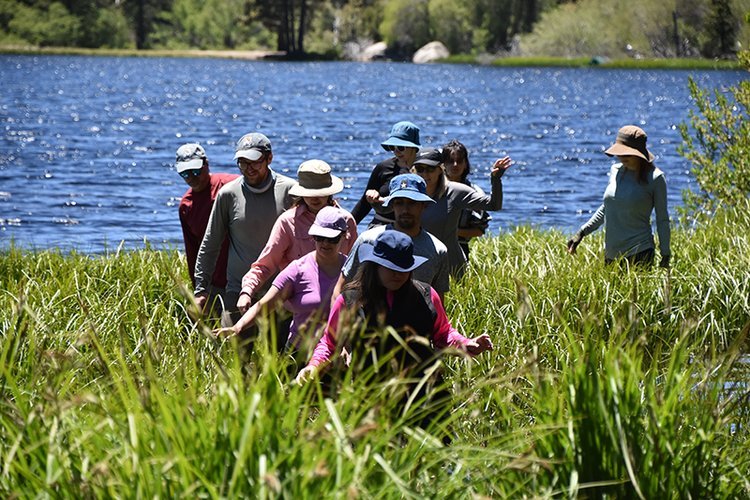Putting the Wild Back in Wild Lands
“Rewilding” — the concept might evoke visions of apex predators roaming untamed landscapes, herds of majestic elk gracefully navigating scenic hills, or beavers returning to a high-elevation meadow by a trout-bearing mountain stream.
The Wildlands Conservancy recognizes that rewilding embraces diverse meanings and perceptions. According to the International Union for Conservation of Nature:
“Rewilding is an ecological restoration approach involving the deliberate process of letting ecosystems return to a wild, self-sustaining state. This includes reintroducing native species, removing invasives, and reducing human intervention to enhance biodiversity and ecological resilience.”
Early indigenous peoples of California practiced sophisticated land management, including seasonal pruning and controlled fires, across diverse habitats to ensure the sustainability of food supply, medicinal plants, and other resources needed for daily life. These human-based stewardship practices promoted biodiversity and are considered in our rewilding efforts.
While the term “rewilding” is growing in popularity, it’s not a novel concept in our organization. At Wind Wolves Preserve the results of successful rewilding captivate our autumn campground visitors with the haunting bugles of tule elk. In 1998, we partnered with the California Department of Fish and Wildlife (CDFW) to reintroduce two dozen of these nearly extinct megafauna, bringing back California’s exclusive subspecies of elk to its southernmost range. Today, the herd approaches an astonishing 500 individuals.
Our latest success is unfolding at Bluff Lake Reserve where we’ve reintroduced two critically endangered species, revitalizing the hope of a future for these creatures. The Reserve is now home to 220 unarmored three-spine sticklebacks, transported with the help of CDFW and U.S. Forest Service biologists, as well as 74 captive-bred Southern California mountain yellow-legged frogs from the San Diego Zoo Wildlife Alliance, restoring these frogs and fish to habitats dormant from which they have been absent for seven decades. Together with an upstream watershed restoration program to improve stream flows into the lake and enhance the meadow habitat for endangered wildflowers, this project promises to restore Bluff Lake’s natural balance and biodiversity for many generations to come.

